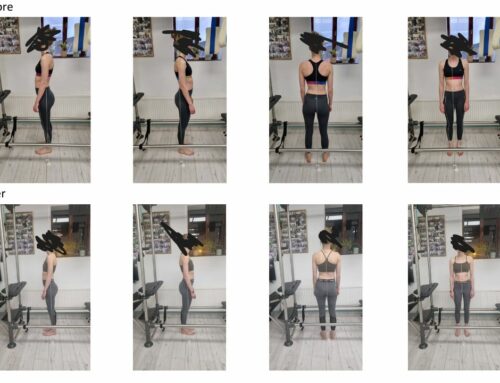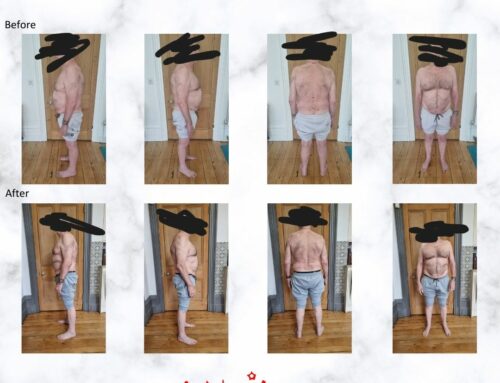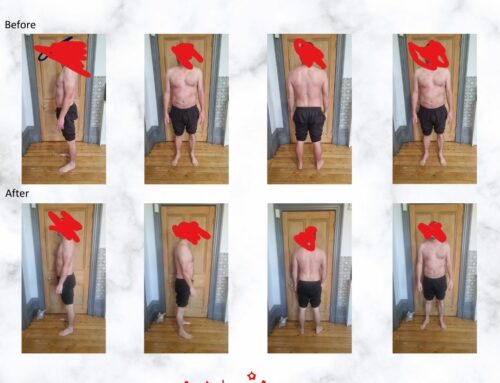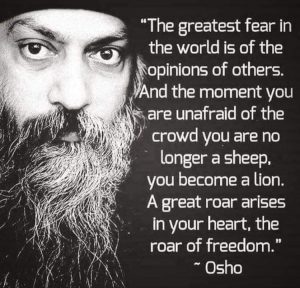 We are all presently experiencing challenges to our survival, that being our health, job, money, relationships and children. The combined stresses put many of us in a more compromised state of health, making us more vulnerable to disease and injury. This is because we are in a state of fight, flight or freeze. Fight mode would be in a constant state of anxiety and panic. Flight mode is running away from the problem or situation or to burying our heads in the sand. This is taking on the victim and child archetype role. Freeze mode would be indifferent – to do nothing, to stay in the same situation and behaviour patterns.
We are all presently experiencing challenges to our survival, that being our health, job, money, relationships and children. The combined stresses put many of us in a more compromised state of health, making us more vulnerable to disease and injury. This is because we are in a state of fight, flight or freeze. Fight mode would be in a constant state of anxiety and panic. Flight mode is running away from the problem or situation or to burying our heads in the sand. This is taking on the victim and child archetype role. Freeze mode would be indifferent – to do nothing, to stay in the same situation and behaviour patterns.
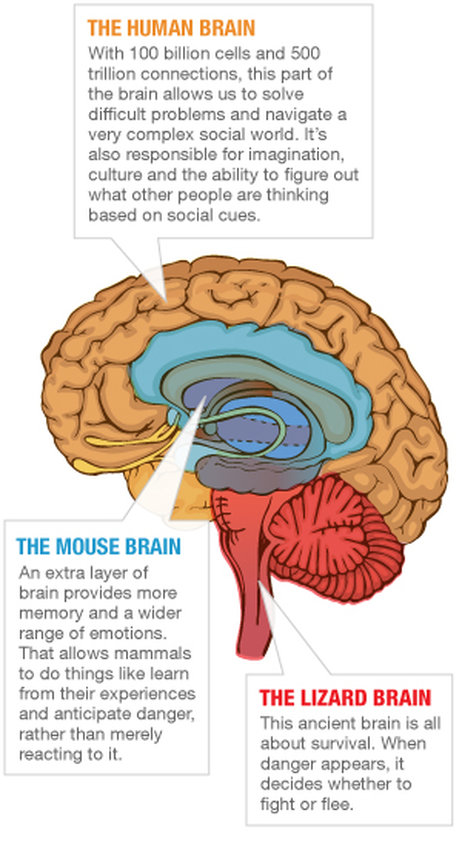 When the central nervous system goes into survival it is formally called sympathetic dominant. We act out of our reptilian brain which is based on old programming. It is so important to get out of survival mode, as we bypass logic, reason and all our years of accumulated wisdom. Operating from our reptilian brain means you are not able to access the full potential of our frontal lobes where you feel happy, think logically and make rational decisions.
When the central nervous system goes into survival it is formally called sympathetic dominant. We act out of our reptilian brain which is based on old programming. It is so important to get out of survival mode, as we bypass logic, reason and all our years of accumulated wisdom. Operating from our reptilian brain means you are not able to access the full potential of our frontal lobes where you feel happy, think logically and make rational decisions.
Being sympathetic dominant can have a number of effects on the body including:
- Chronic digestive issues such as bloating, stomach pain, diarrhoea, constipation, not digesting food properly, etc.
- Feeling wired but tired
- Experiencing anxiety or panic attacks
- Unable to mentally slow down
- Feeling constantly ‘rushed’
- Feeling like you have to constantly be doing something
- Dilated pupils
- Insomnia
- Fast pulse
- Lowered immunity
- Increased blood pressure and blood sugar
- Increased sweating
- Shoulder and neck muscle tightness
- Constant fatigue
- When information comes into your brain, it first enters your amygdalae.
- You have two amygdalae on either side of your brain.
- They are shaped like little footballs and are located inside your brain just above your ears.
- I liken your amygdalae to the control tower at the airport.
- When information comes in that makes you feel threatened, your amygdalae send these signals to the back of your brain where you go into fight, flight or freeze.
- This is sometimes known as an amygdalae hijacking.
- You might have thought of yourself as a rational creature but all of a sudden you shut down, freak out and can’t hardly think straight.
- When you feel safe about the information you receive, your amygdalae send the signals to the frontal lobes of your brain where you can think logically.
- You remain calm and can plan your way to move forward.

Isolation is the time for growth, levity and knowing yourself. Do you have a legacy or goal? Most of us are living in what’s called the inner child archetype. We simply live out an overplayed record or story, living a facade of repeated behaviours and habitual patterns that do not serve us. We now have the opportunity for reinvention, reintegration and rebalance. Give yourself meaning, have some inner purpose, change your perspective and become your potential. Remember we are influenced from the five most dominant people that we spend time with in our life. If they are not coming from a place of good health and are in a state of anxiety and panic themselves, they simply pass on their beliefs, behaviours and fears to ourselves. Remember most of us are ill-informed. We become the people we mix with. Staying connected with ourselves and staying connected as a community and tribe is so important. Of course not everyone has the right environment to engage in this. During this isolation period I have personally chosen to study and learn from what I feel is the best teachers and authors in movement and anatomy. Also reading and participating in meditative practices that work for me is a great way to move forwards. I’m also getting out of the mind set that I will address XYZ after Covid-19 if it’s difficult to do at that moment.
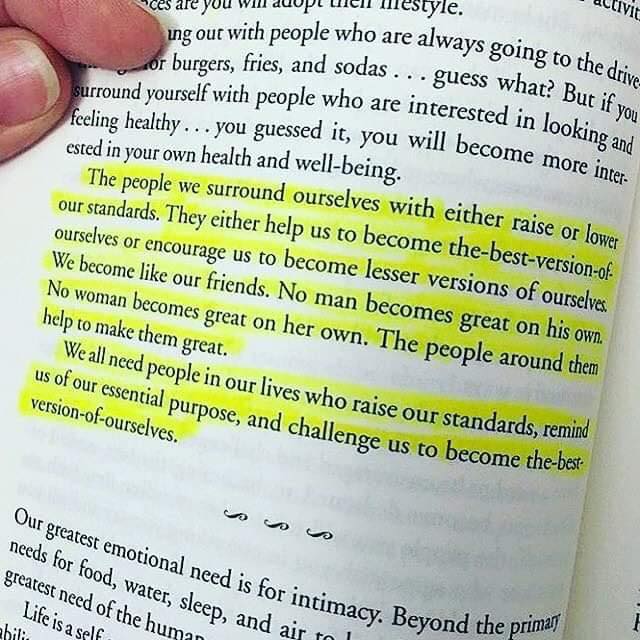
So what is our reptilian brain?
In the 1960s, American neuroscientist Paul MacLean formulated the ‘Triune Brain’ model, which is based on the division of the human brain into three distinct regions. MacLean’s model suggests the human brain is organised into a hierarchy, which itself is based on an evolutionary view of brain development. MacLean’s extensive research provided ample objective evidence that what we refer to as our brain is actually three brains interwoven into one. MacLean’s model claims that activity in the three brain regions (basal ganglia, limbic system, and neocortex) is largely distinct when we are engaged in each of the mental activities outlined above. For example, when we are in danger and must respond quickly, as an act of self-preservation, the reptilian structure is aroused, preparing us for action by initiating the release of chemicals throughout the body. When we are watching a shocking news story or receive an upsetting message, the limbic system is stimulated and, again, chemicals are released, which create our experience of emotions. Finally, when we are making decisions, solving problems or reasoning, the neocortex is engaged, without the involvement of the other brain structures.
The three regions are as follows:
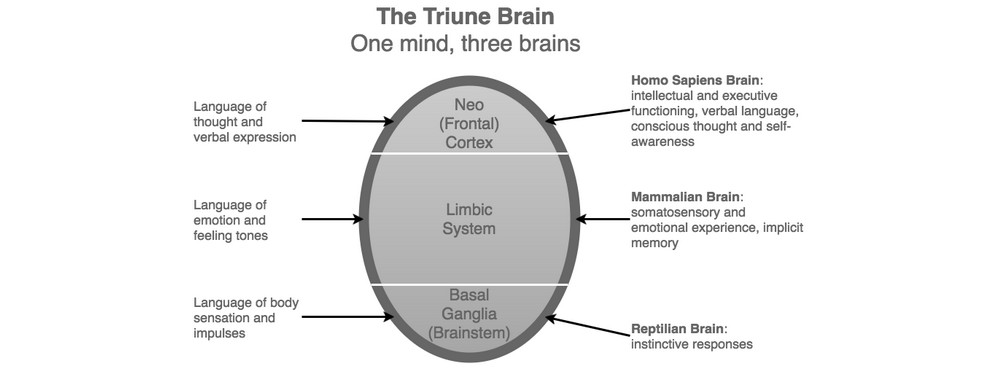
Our limbic system is based on survival reflexes. It’s a vast network of brain and body circuits that are responsible for our sense of emotion, as well as being interwoven with many of our other senses, such as the experience of time. When we express a negative disposition to injury and disease this holds us back form a full recovery . We know from research papers in psychoneuroimmunology that repeated negative statements made inwardly or outwardly regarding any aspect of the body will have a profound affect on the body.
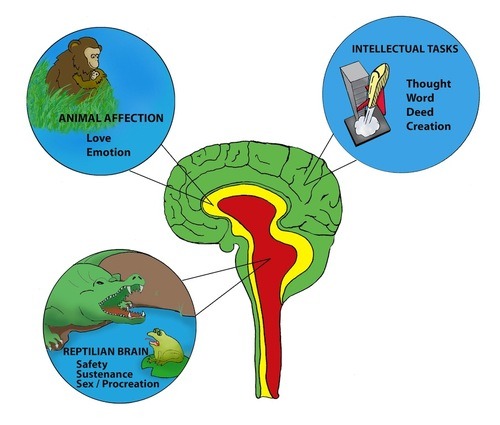
This is also true of pent-up thoughts, feelings and emotions. I have found that clients who do not let go of their feelings have more stress in the long term. This is easier to see from a Chinese medicine perspective. The organs and emotions are strongly linked. For example the lungs are associated with sadness, grief and depression. We can be the creator of our of our own disease and ailments without knowing it. When you consider that pain is technically an emotion it becomes evident that there needs to be a strong mental emotional component if legitimate healing is ever to be achieved. What is important to note is that emotion is the first thing to affect the autonomic nervous system. In general most medical or manual practitioners take little notice of autonomic nervous system function or dysfunction, as they expect it to be a job for the neurologists. I have found that limbic energy (that being pain and emotion) produces endless visits to medical practitioners and the use of pharmaceutical drugs. Most of these approaches only cover up the problem by drugging it rather than treating the root cause.
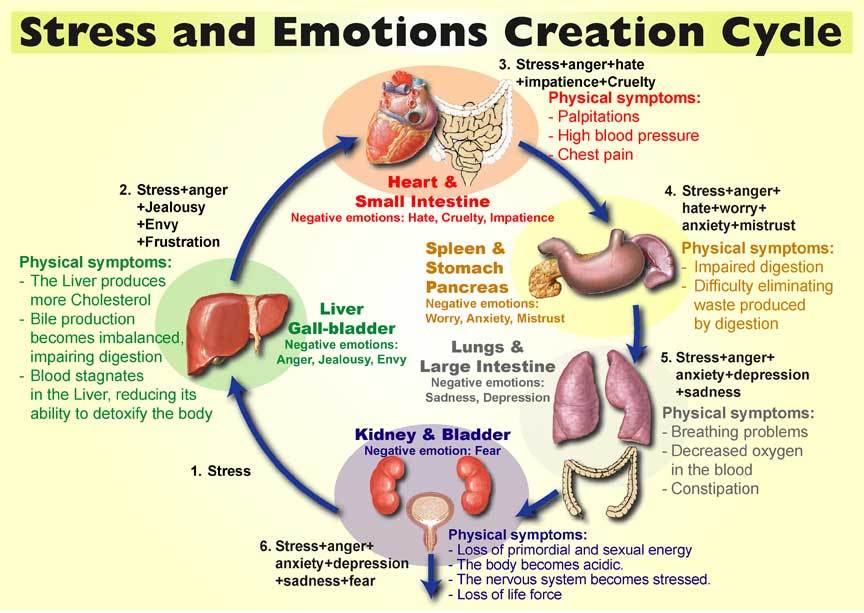
Current research is suggesting that our prefrontal cortex may be the “4th brain,” offering important characteristics to our perception and cognitive processing. If a person cannot make meaning of their life or find direction, then the harmonies of the body breaks down. When a person falls into self pity or negative talk, they are often unknowingly reinforcing a faulty pathology and are making bodily matters worse.
“One of my top tips is to stop obsessively watching the news. Only bad news sells and if you’re a ‘victim’ (see yourself or the world as negative/unlucky) it feeds that negatively and is actually quite harmful to the subconscious. By all means, know what’s going on in the world, but don’t have it as a backdrop to your life. Your subconscious is ALWAYS listening…. feed it with good, positive stuff”. Jo Banks
Bibliography
Catherine Carrigan newsletter
Warren Williams live instagram log
Paul Chek blogs


